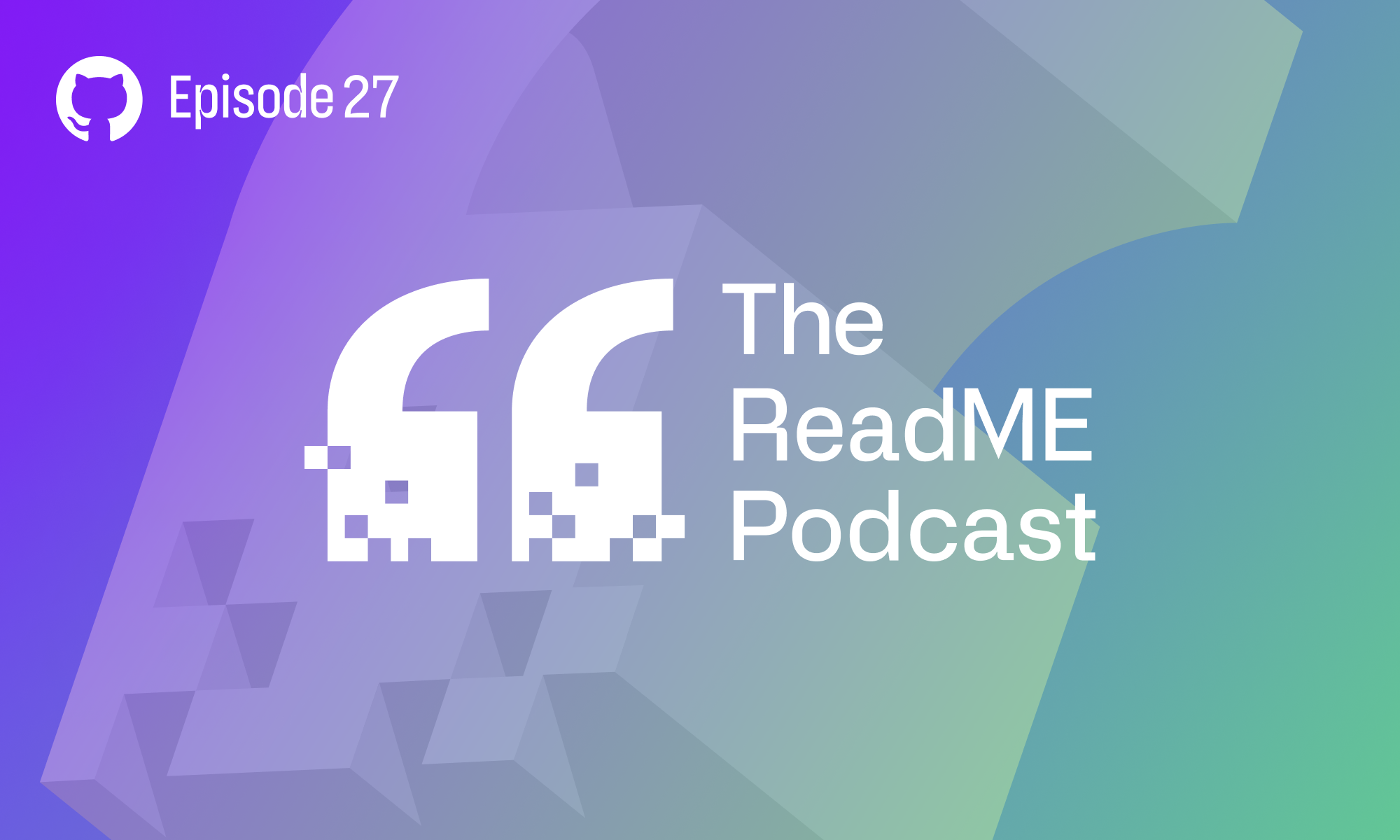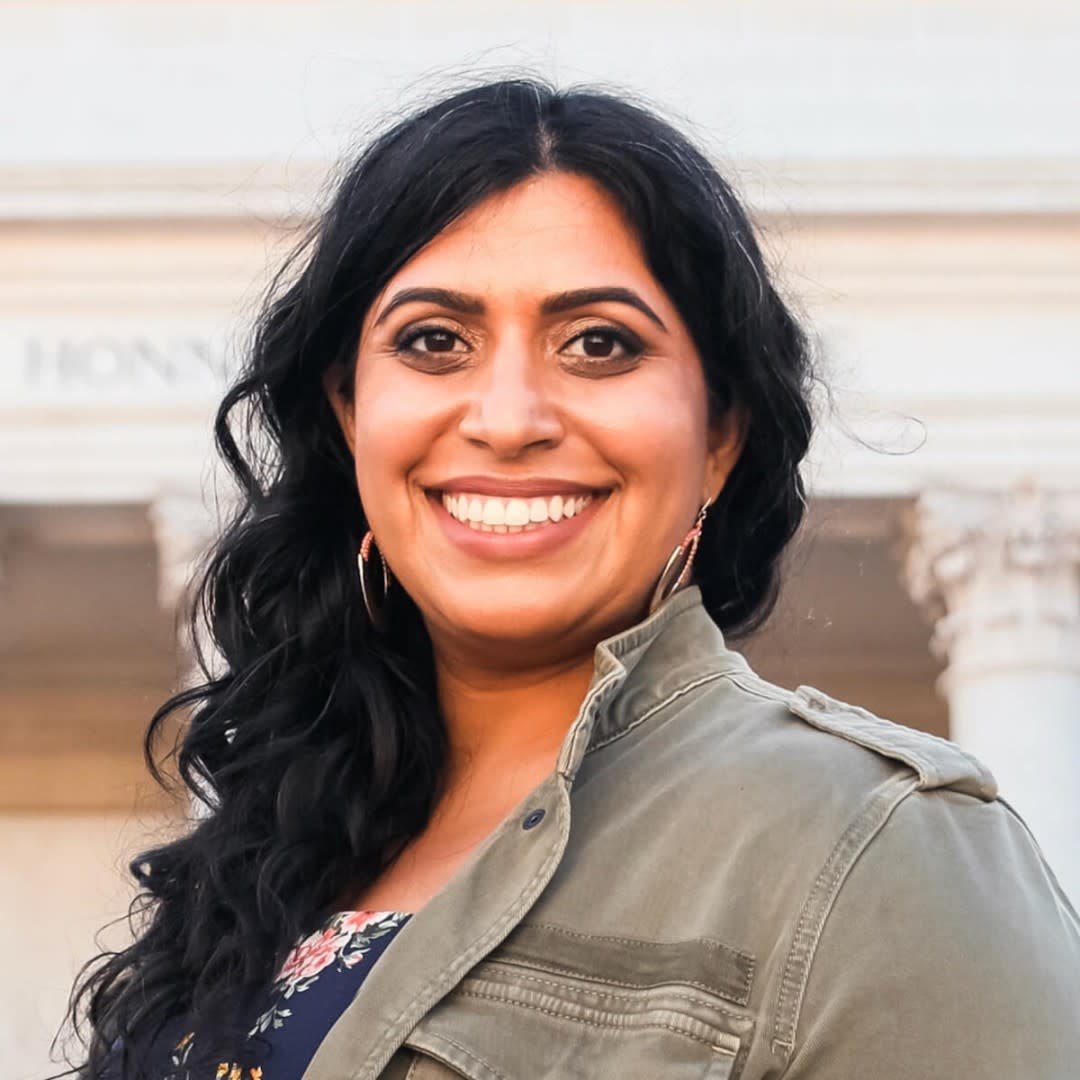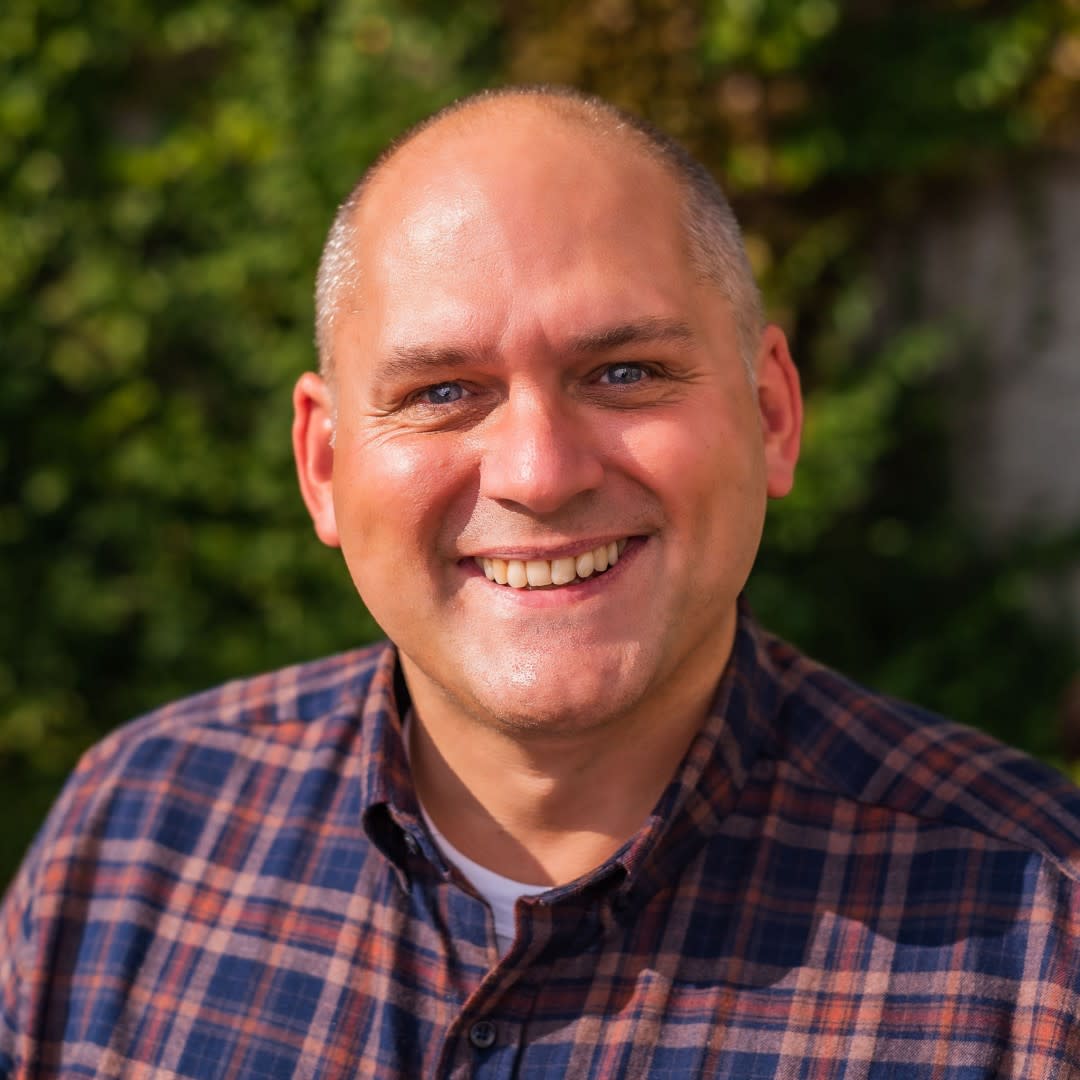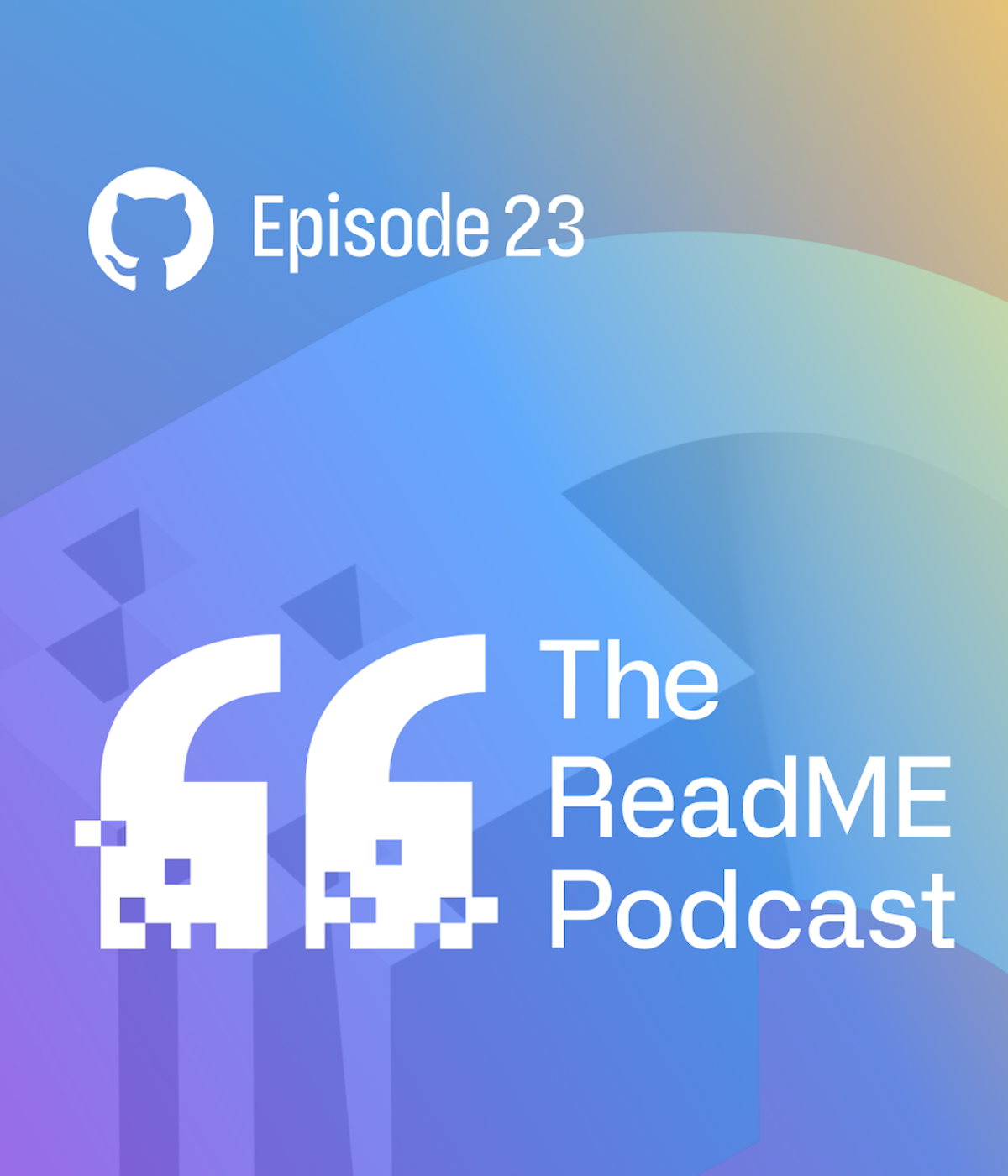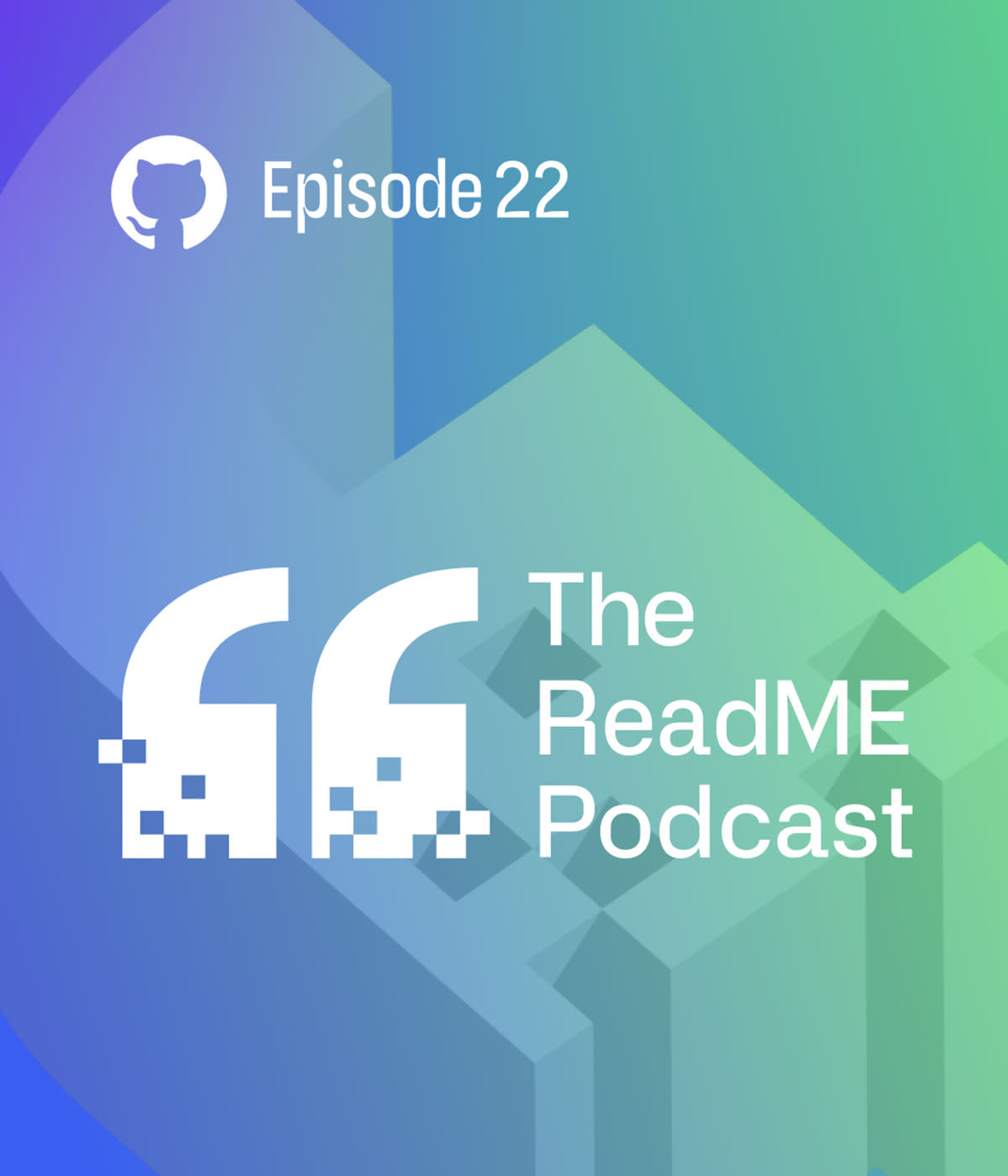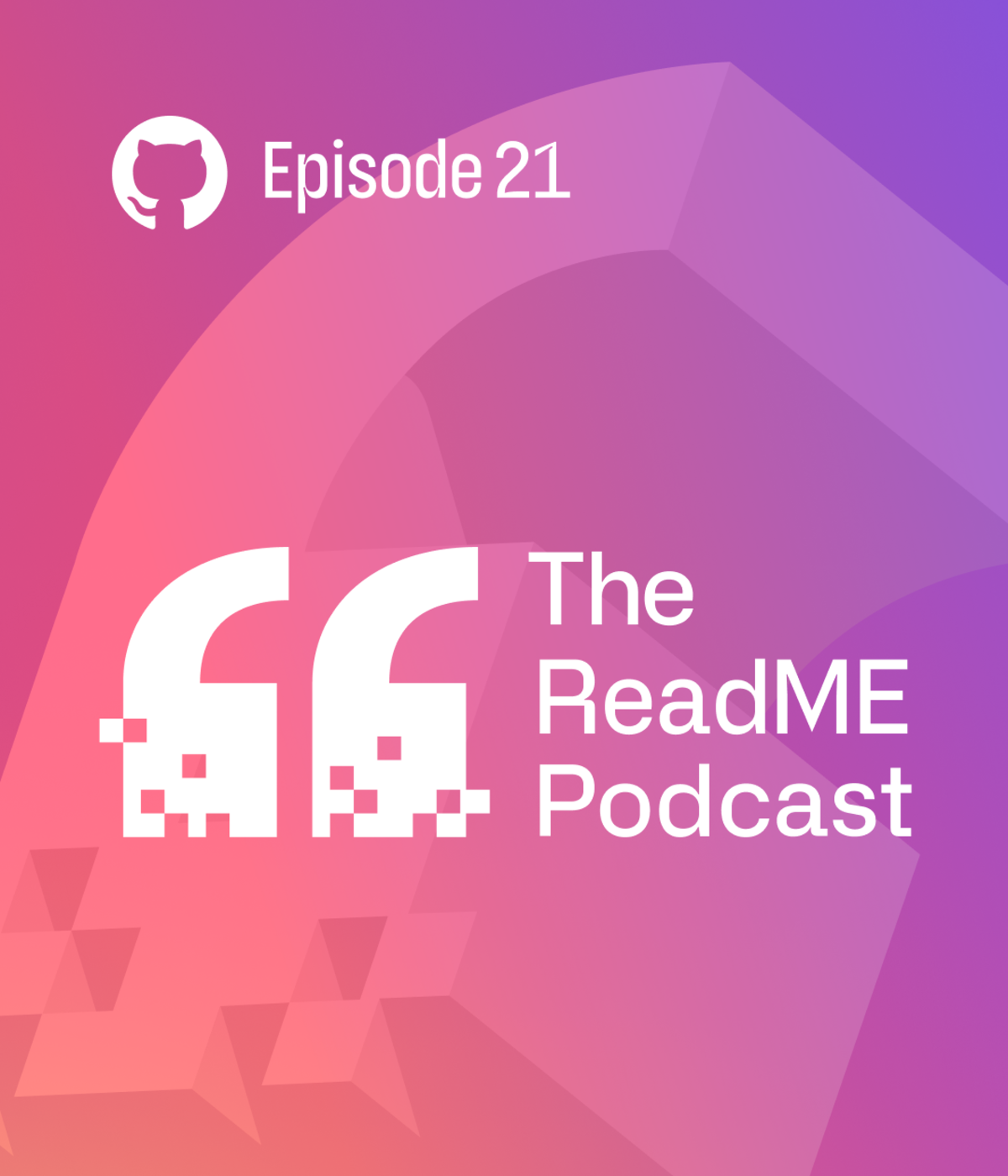The ReadME Project amplifies the voices of the open source community: the maintainers, developers, and teams whose contributions move the world forward every day.
The ReadME Project // @GitHub
In this special edition of The ReadME Podcast, the hosts welcome a panel of developers and educators to discuss building accessible technology, the impact of inclusion on innovation, and how the developer community can get involved in building better technology for everyone.
Here’s what’s in store for this episode:
00:00 - The hosts hear from Ed Summers, GitHub’s head of accessibility, about the meaning of disability and accessibility and why it's important to involve everyone in building technology.
10:43 - The panel: Annalu Waller, Becky Tyler, and Kirsty McNaught join the hosts to discuss how they started working together, why inclusion in development is so important to producing the best outcomes for everyone, and what AI means for the future of accessibility.
32:55 - Release notes: The ReadME Project Senior Editor Mike Melanson discusses his article diving deeper into how open source is expanding accessibility development.
Check out the conversation with Annalu, Becky, and Kirsty (video):
Looking for more stories and advice from the open source community? To learn more from the authors and experts featured on this episode, check out:
Featured Article & Video: From gaming with your eyes to coding with AI: New frontiers for accessibility by Mike Melanson
Kristy McNaught’s GitHub Sponsors page and open source project, EyeMine
The unique origins of open source in machine learning by Mikio Braun
Special thanks to Annalu Waller, Becky Tyler, and Kirsty McNaught for being a part of this conversation. Also, thank you to Ed Summers for setting the stage, sharing his story, and highlighting why accessible technology benefits everyone.
Martin Woodward: This is The ReadME Podcast, a show dedicated to the topics, trends, stories, and culture in and around the developer community on GitHub. I’m Martin Woodward and I lead the GitHub developer relations team.
Neha Batra: And I’m Neha Batra and I lead GitHub’s core productivity team. And today, no first commit, no ask RMP. We’re bringing you a special episode around something near and dear to our hearts: Accessibility.
Ed Summers: There are about 1.3 billion people with disabilities, and for those of us who create the technology that is used by all of humanity, we have an amazing opportunity to improve access for everyone. Accessibility definitely empowers access for people with disabilities, but there’s all of these fringe benefits that we can realize when we think more broadly about how people use our software.
Martin: That's the voice of Ed Summers. He’s the head of accessibility here at GitHub. Today on the show, we’re going to hear more about Ed and his work. And then Ed is going to introduce us to three people who are changing the way we teach the next generation of developers to make their applications available to everyone, and also talk about some Minecraft mods. But more on that in a bit. First, Ed, why don’t you tell us a bit more about yourself?
Ed: I’m a blind developer. I was a developer first, then I lost my vision, and then I started working on accessibility. And I came to GitHub because there’s such an enormous opportunity for us to improve accessibility, not only for developers but for all people with disabilities.
Martin: GitHub’s the home for all developers, not just those that are currently able-bodied. And part of Ed’s mission since he recently joined the team is to make sure people with disabilities can also contribute to open source, and in all aspects of software development. He’s aiming to help these groups of people to build cool technology as a core part of their engineering teams.
Neha: Accessibility hasn’t always been a core focus in this industry, and it’s not because of a lack of technology. There are other barriers to getting people involved and welcoming them into the developer community. Barriers that Ed and others are working hard to break down. We wanted to hear more from Ed about his work, and started by asking what disability means to him and what he means by “accessibility.”
Ed: There are many definitions of those terms, depending on your context. I think when we’re talking about technology, the definition that I prefer is from the United Nations Convention on the Rights of Persons with Disabilities. And I’ll just paraphrase: Disabilities arise from the interaction between people with impairments and barriers within the environment. So this is a profound definition. It means that disabilities are not inherent to people, right? In addition to that, we realize that when disabilities are not inherent to individuals with impairments, then what is the cause of disabilities? And the cause is when those of us with impairments encounter environments, or specifically barriers in the environment, that prevent us from participating. Once I saw that definition, even though I’d already lost my vision for years, it had a profound impact on me as a person—a “person with a disability”—because it just helped me realize that the fact that I’m blind doesn’t mean that I can’t do things. I can’t do things when I encounter situations that are not designed in such a way to account for the fact that people have a full range of vision. Accessibility is simply the lack of barriers. And boy, did I think about this. You know, I was a math nerd when I was younger, and I like to think about things in terms of equations. And if we write the equation: Disabilities = impairments multiplied by barriers, right? If we drive the barriers term to zero, then disabilities also go to zero.
Neha: I really like that framing because there is a piece of it that we can take action on. Like there’s a piece that’s not in our control and there’s a piece that’s in our control, right? Looking at this at a broader scale, why do you think that these issues have been so overlooked in the past, in your experience?
Ed: Well, I think all of us tend to think that people use technology and people live their lives exactly how we do. And when I was a fully-abled developer many years ago, I did not think about accessibility. When I lost my vision, then it became an imperative. If we can all just think about the people who use our software, they’re not like us. They vary in so many ways, not to mention just abilities, but from gender, income, access to high-speed networks. And there there’s just so many ways that the people who use our software differ from us. And I think if we move forward with the design and development implementation of technology with that broader framing in mind of the human experience—that will improve access and participation for everybody.
Martin: Definitely. I mean, have you had the chance to talk with other developers with different impairments that are using GitHub?
Ed: Yeah, one of the best parts about my role is reaching out to and talking with developers with disabilities about how they’re using our technology and how they’re building cool stuff themselves.
One of the people that I’ve recently had the pleasure to interact with is a young lady named Becky Tyler. And Becky has impairments that prevent her from using her hands and also from speaking. So she uses her eyes to interact with computers. And she’s learning how to develop software, how to write code.
All of this started because she wanted to play Minecraft with her friends, strictly using her eyes. That led to a non profit organization called SpecialEffects, and that led to a participation in the open source community on an open source project called EyeMine. And that led to an opportunity to study computer science at the University of Dundee.
Neha: I think what’s really interesting about this is that there’s a very broad range of what disabilities are and what accessibility could mean. How has your conversation with developers like Becky changed your understanding of disability and accessibility?
Ed: That is a great question because even though I have a disability, I can get very fixated on my disability as a blind person. I don’t use my eyes at all. I can’t see. So I use primarily my ear and a screen meter. Well, Becky uses primarily her eyes. She doesn’t touch any device. She doesn’t talk to any device. So, they are almost, in some respects, complete complements. So it’s been a pleasure to talk with Becky and learn from her. And, you know, no pun intended, but my eyes have been opened based on her experience.
Neha: Yeah, I had a similar experience when we were building out our CLI and we got to see someone who was blind trying to contribute with us. And I’m going to tell you, I’ve never looked at colons the same way again. Being able to understand what are really important grammatical pieces to make things more accessible for folks was something that I’ve always taken away from me since then. So that’s my personal experience.
Ed: If we are to improve accessibility across the board, across the entire technology industry, I do think that it is critical that people with disabilities are invited into the development process as developers, designers, technical writers, product managers. The potential benefits of that are at least two-fold. The first one is that those of us with disabilities, even if we’re not working on accessibility, we will make a positive impact on the outcome of the product simply so that we can do the work, so that we can participate on the development team.
However, you know, if you look at Becky and I, for example, who are people with disabilities who are focused on accessibility, and because of that, the outcomes of our work will be particularly useful for people with disabilities because we live and eat and breathe access with our lived experience every single day. And that is just, one, bound to show up in the product as a great user experience. And, two, it has an impact on the people around us as we work on our development teams and we just naturally educate people on the needs of people with disabilities.
Martin: I think the work that Ed’s been doing has really kind of expanded the way a lot of people think at GitHub about the community and accessibility. And we touched on this a bit, but there are 1.3 billion people in the world with disabilities; making it easier for people to contribute to developing helps everybody—every single person that uses our products.
Neha: Ed made the point, while we were chatting, that when we increase the accessibility of software, we also increase the testability of software, which is really important to me as well. Captions, for example, they can be used to improve SEO or train AI models, and they can help improve the product for everyone.
Ed: My philosophy here at GitHub is that developers with disabilities, they’re the heroes of our accessibility story. And for the last six months or so, we’ve been working on a series of videos that showcase disabled developers and their work, and we’ve been working with Becky.
Martin: That video’s out now, and I found it gives you a great insight into how Becky achieves all that she does. You can check it out now yourself at GitHub dot com slash read me.
Neha: We’ve been really inspired by Ed and his work, and we wanted to learn more about Becky and how she is building her developer skills. Becky Tyler is a student at the University of Dundee in the UK, who is studying computer science.
Martin: And as Ed mentioned, Becky has impairments for speaking and limited movement. So instead she speaks with her eyes. Then a computer articulates her answers for us. Becky Tyler, hello!
Becky Tyler: Hello!
Martin: Becky has a mentor in the developer, Kirsty McNaught, who helped her start working on Minecraft, and used something called the EyeMind Project.
Neha: Kirsty McNaught, hi there.
Kirsty McNaught: Hi there. Thanks for having me.
Martin: And Becky studies under a professor of computer science at the University of Dundee called Annalu Waller. Professor Waller also has disabilities herself and works tirelessly to advocate for people with additional needs in education.
Neha: Professor Annalu Waller, welcome.
Annalu Waller: Hi there. Great to be here today.
Neha: I’m going to start with a question for Kirsty. So I was curious, Kirsty, how did you get involved in this space and how did you and Becky meet?
Kirsty: So I originally studied engineering and went into the kind of world of tech startups. So I did computer vision, machine learning, working for a few different companies who had invented a cool technology and they wanted to find a problem that it solved. And I was always a little bit frustrated that that approach meant we weren’t necessarily actually solving important problems that mattered.
So I had been working in startups for a while and I was bored. I did some research to find some places where I could contribute some of my development skills. So I spent a day a week on each of two projects, one of which was working with SpecialEffects on what turned into the EyeMine Project. And they had known Becky for a long time, and so they’d had on the back burner this request that kept coming from Becky, but also kept coming from other people as well. I’m not sure Becky ever stopped asking for it, which was, I want to play Minecraft with my eyes. And they had found some ways to help Becky do that. But it required the user to be Becky and be really good at eye control. And there was this goal to open that out to more people.
Martin: Becky, would you be able to explain to the people listening at home how you actually interact with the computer? You know, what interactions work well for you, what sort of pain points you have?
Becky: At the bottom of my monitor, I have an eye tracker that is calibrated to my eyes and it can tell exactly where on my screen I am looking. My eyes become like a confused mouse. So wherever I look on the screen, the cursor goes.
Then I can do a mouse click on the screen by staring in one place for a short time. It’s not easy and it takes a bit of practice. There is nothing about, I guess, access that is effortless. A user who’s just starting out with Eyegaze needs to learn how to control their eyes and use their eye muscles in a different way than when they are just looking at things. So it takes a lot of practice.
Small targets on the screen—such as small menu items, or the windows minimized, maximize, and exit buttons on the top right of the window—could be particularly difficult to select, especially for a beginning user.
When painting a picture, it can take a lot of precise control of the digital paintbrush to get the drawing or painting correct. Thankfully, our control software is getting more sophisticated and now gives more ways of overcoming these challenges.
Neha: So, Annalu, I know you initially learned about Becky through her work on Minecraft and you invited her initially to come speak to computing students at the university. And now, she’s a student there, right? So what do you witness in your other students? Like what are they learning from having Becky in their cohort?
Annalu: We are very lucky at Dundee because our computing students have and awareness of accessibility from day one. And we’ll also look to our student cohort to engage in the widest diversity of end users. However, having someone who actually uses AT (accessible technology) in the course makes it all so real.
I went around at the end of last year, congratulating my staff because Becky, you flew through your two first modules without thinking and actually really, really did very well. And I didn’t realize that, years and years of embedding accessibility and user diversity as a grounding to all of what we do at Dundee, has paid off. But I don’t think you would get that in many other institutions. So I’m just very proud of Becky, of Kirsty, of all the academics and the students who just see Becky as one of their own. But Becky can tell you more about that because I only teach them, I don’t hang out with them.
Martin: Yeah, Becky, how has it been for you as a student in all these courses on user interfaces? I have a son who’s currently first year computer science. So what are you finding, you know, from your fellow students as they’re, as they’re learning and interacting with them? How’s that been going?
Becky: It was really cool being on Annalu’s course. And I was able to show some of the other students how I work and access my computer, and it helped them put the course in context. For some of the topics, I felt like a bit of an expert as I am living with accessible technology, and using it every day. But Annalu was a hard taskmaster and didn’t let me off lightly. In fact, I think she expected more from me.
Martin: Of course, there’s a lot of devil in the details when it comes to any relationship, whether that be between co-developers, mentors, mentees, or professors and students. And since we love talking tech, we also want to learn more about how exactly Kirsty and Becky work together. Plus, more about Annalu’s and Becky’s relationship. So, we started by asking Kirsty what the pair coding sessions for Minecraft mods actually works like.
Kirsty: Becky had asked me to help her learn to program before she’d even got onto her undergraduate course. And then, last term, I found myself in the position of officially supporting her at university and helping her in her course.
But whenever we were kind of finished, the next request was always, “Can you help me with the Minecraft mod?” So we had a bit of a weekly ritual of getting together over Zoom. We’d share Becky’s screen and take it in turns to write code, which was an amazing opportunity for me to actually see the real-life workflow of what she was using, because when she’s coding, most of the time, Becky is using an interface that I built for her based on OptiKey, but with some extra hacks in it for coding, and with some custom keyboards specifically for VS Code that she’s using.
I can make some reasonable guesses about what would be necessary to make basic software more accessible based on my experience working with people with Eyegaze. But in reality, it’s never exactly as I picture it because that’s not what I’m doing every day.
So we would get on to Zoom together, Becky would have a request of what she wanted to work on next. A big part of what we were doing last term was an automatic aim-and-attacking mod so that when Becky was fighting with people, she could respond more quickly, and in the process, sometimes try out some aspects of the workflow that we’d been trying to speed up. So we made very good use of snippet functionality. So we had some customer snippets that Becky could insert for loop with many fewer characters than if you were typing it out letter by letter, and, you know, various other chunks of code that we might want to reuse, and we would try out using the different workflows and find bugs.
There was one bug in particular that took me a long time to pin down because whenever it happened with Becky, I would say, “Oh yes, I need to log that bug.” And whenever I went to log it, I’d go, Oh, doesn’t seem to be happening for me. And it was a very specific order of keyboard and mouse workflow that always hit Becky, because of the way that she was using her eye control system. And I didn’t even realize that at a crucial point in the process, I switched to, you know, jumping on the keyboard or jumping on the mouse or something.
But yeah, so I think it was certainly really valuable for me to iterate on the interfaces and the kind of workflow tooling that Becky was using. And I hope it was also useful for Becky in terms of practice and coding. How did you find it, Becky?
Becky: I find our pair coding sessions very useful. You taught me how to split problems up into manageable components to solve. I also learned how you’re geocoding, so I picked up some good tips from you that I wouldn’t otherwise have thought about.
Kirsty: I hope you didn’t pick up too many bad habits.
Martin: For our podcast audience not lucky enough to see the reaction, let it be known that Kirsty did get a real big laugh out of Becky right then.
Kirsty: Can I also say on that: The interesting thing about pair coding with Becky over Zoom is that she has it set up so that I can see where she’s looking. So her eye tracker will show a little circle on the screen, which means that if I ask her a question like, oh, you know, “How do you think we’ll solve this problem?” I see where her eyes go. And it’s like a secret window into her brain as she kind of looks to read the comments or look through the API docs. And I’m like, Yep, I know what you’re about to say. And we actually end up not even having to communicate with words all that much.
Annalu: Kirsty, I was really interested by you saying that sometimes the bugs didn’t work with you, and we’ve found that this is why we need disabled programmers and disabled users as part of the entire development. Nobody can actually simulate Becky’s eyes or my hands, and it’s amazing how many times students will bring me work and I will break it without even trying because they haven’t anticipated the lecturer doing key strokes that they haven’t even thought about. So I’m the worst lecturer for coding ever because I will break every single program that our students develop. And it’s so cool! I love it!
Martin: That sounds like the best lecturer to me.
Neha: Yeah, I was going to say the same thing.
Martin: Yeah, there you go.
Annalu: And it does make learning that much more interesting. I’m also renowned to have content-free lectures because I tend to tell a lot of stories—and Becky, I don’t know if you want to comment on whether those stories actually carry any information… (Neha laughing)
Becky: Annalu’s stories are quite funny sometimes.
Martin: I think that’s the highest review you can ever have, Annalu, from anybody who’s a teenager.
Annalu: It is. But I think it’s partly to put students at ease, because even having a disabled lecturer induces a level of fear that you need to get away from, and to encourage students to see people as any other person, lecturer, or student.
Neha: In our conversation, we learned a lot from Becky, Kirsty, and Annalu about how to work together and learn from each other. As we closed, we wanted to know more about their hopes for the future and the advice they have for others working to increase accessibility.
Annalu: Everybody is talking about AI, and mostly, I think, “Oh no, here we go again,” because AI, to me, doesn’t, isn’t what the non-professionals think it can be. But I do think that we have not even touched the potential power of technology to support people to communicate more effectively. And for me, that is the holy grail. That is not easy. And that’s what makes me excited. And we need to put more emphasis in getting technology to carry more of the operational and access burden to allow users to actually be able to share their cognitive and artistic and absolute wonder of who they are in more constructive ways.
Kirsty: I’m really excited about seeing more and more representation out there. So, every time people hear stories about developers like Becky, their assumptions are challenged again. And I would like to get to a point where we’re not surprised that one of the developers contributing to our project has a disability and needs an alternate input, or one of the users of our product is blind and uses the screen reader to get the content.
There's nothing fundamentally about programming that should prevent somebody with a complex disability from getting into the field. I mean, ultimately the end product of what we do all day is we wrote some characters on the screen and it makes amazing things happen, and it shouldn’t matter where those come from, like the interface between your brain and your creativity and your problem-solving skills and the characters you type on the screen: That should be something we can abstract away.
And, as developers, each time we see and are reminded of differences people might have in the way that they input things into a computer or the way that they receive information from a computer, the more we should come to expect that, and then we end up designing for and then we end up with more people in our midst who represent all of that diversity. And then all of our software gets better. And it not only gets better with all of the general usability, but it also empowers people who might have particular niche needs to have the skills to solve their own problems or solve the problems of their friends and family.
Martin: Fantastic. I completely agree. Becky, what about you? You’ve got the future ahead of you. What makes you excited about what’s coming up?
Becky: I am always excited to see new accessibility features in software and new hardware that enables me to do new things that I have never been able to do before. When I can be involved in such development projects, it makes me feel so proud to be helping other disabled people like me.
Kirsty: Something that’s really significant is when you start to see accessibility features just coming into an operating system as default. And in the past few years, we’ve been seeing more of that in terms of eye control. So Windows has eye control: You can turn it on if you have an appropriate piece of hardware to plug it in. And I don’t think it will be that long before you can do that to some extent with your webcam and the power of AI, no doubt.
Annalu: I think it’s raising expectations. I think for so long people who have any degree of difference are regarded as less than others. And the reality is that we are all human. And having a disability of any kind is a part of being human. So instead of seeing disability or other requirements as “other,” we should actually be seeing that as part of who we are. This amazing world of human beings with the potential that we all have—every one of us.
Neha: So, Martin, in reflecting back about this interview, there’s definitely a few things that made a lasting impression on me. For a long time, I’ve had this deep-seated belief that engineers should get to meet their users and work directly with them. We need to meet our users where they are at. I’m always going to try to predict how people are going to react when I’m coding things out, but it's nothing like seeing it in person and seeing people actually use it. And that’s when you really start to expand your mind around the possibilities of being able to create really good user interactions.
The other part that kind of came to mind is, you know, especially as a manager, it’s important for me to accommodate different learning types. And when I think about how I might present something in writing and then with a visual and then present that so that there’s an auditory recording later, I do that because I know that if I want the message to stick, I need to have different ways to interact with them. And I feel like there’s really strong parallels with trying to make sure that you’re communicating effectively. And what we heard in these interviews today is that you really need to take different angles to being able to get your message across. And when you do that, the message sticks, you get better at telling the story, and everyone is able to be able to get a little bit further, faster.
Martin: So I loved this conversation because it made me realize there’s this huge percentage of the workforce that’s been excluded. And if we can unlock them, we can unlock all the potential and creativity that they can bring, and we can really make things a lot better. We all perceive the world differently around us, the solutions we make, they’re all going to be different, too. People whose brains are wired differently, people who have lived different experiences—they can all come up with incredible solutions that other people might not think of. And if you think about any ecosystem, I’m a massive believer that the healthiest ecosystems in nature are the ones that are the most diverse. It makes us so much more resilient as a society.
Neha: As we heard from Ed Summers, head of accessibility at GitHub, the conversations we've had today are just a piece of the larger puzzle. To hear more about accessibility and some of the other stories we’re working on, we’re joined again by The ReadME Project’s Mike Melanson. Hi, Mike.
Mike Melanson: Hey, Neha. So here’s what we have coming up this month. With 1.3 billion people with disabilities around the world, there’s plenty more to discuss. And our monthly feature does just that. In addition to diving deeper into Becky’s story, we hear about how other developers use open source software to empower themselves and others. And even the story of a Ukrainian developer with cerebral palsy who’s combining Chat GPT and GitHub Copilot in his efforts to both communicate and code. And you can find our video about Becky, Annalu, and Kirsty embedded right at the top of the story. We also have a new guide by Mikio Braun that shares the unique origins of open source and machine learning, and offers some insight into the landscape as it is today
And next time on the show, we’ll be back with our Ask RMP segment. Email us your questions and ideas to The ReadME project at GitHub dot com, or share it on your favorite social media account with hashtag ask RMP. You might just hear an expert answer your question on an upcoming episode.
Martin: And thanks to you all for listening. If you’d like to learn more about Becky, Annalu, Kirsty, and Ed, and the work they’re doing on accessibility, there’s tons of information in the show notes. We’ve got links to our video series featuring our guests today. We’ve got Ed’s talk at axe-con and ways to support Kirsty’s open source work through GitHub Sponsors.
You can also find the first video of our accessibility series in Mike’s article on GitHub dot com slash read me, or you can subscribe to our newsletter and get it straight in your inbox.
Join us each month for a new episode. And if you’re a fan of the show, you can find more episodes wherever you get your podcasts. Make sure to subscribe, rate, and review, or drop us a note at The ReadME Project at GitHub dot com. You can also learn more about all that we do at GitHub by heading to GitHub dot com slash ReadME.
CREDITS: GitHub’s The ReadME Podcast is hosted by Neha Batra and Martin Woodward. Stories for this episode were reported by senior editors Klint Finley and Mike Melanson. Audio production and editing by Reasonable Volume. Original theme music composed by Zander Singh executive producers for the ReadME Project and The ReadME Podcast are Robb Mapp, Melissa Biser, and Virginia Bryant. Our staff includes Stephanie Moorhead, Kevin Sundstrom, and Grace Beatty. Please visit github dot com slash read me for more community-driven articles and stories. Join us again next month and let’s build from here.
Neha: So Annalu, how does it feel to be called a taskmaster by Becky?
Annalu: Wonderful. I always tell my disabled students that I’m their worst nightmare because I won’t let anyone get away with murder.
